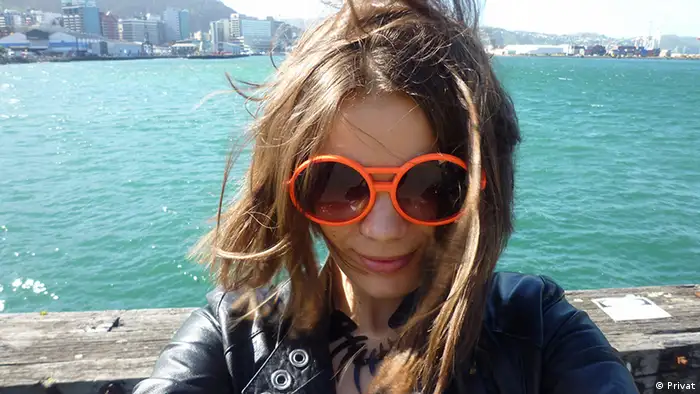GMF
Regine Debatty on the fine line between art and tech
Scientists and artists have more in common than you may think, says Regine Debatty.
Régine Debatty is a writer, curator, critic, and founder of We Make Money Not Art. Debatty writes and lectures internationally about the way in which artists, hackers, and designers use technology as a medium for critical discussion. She also created A.I.L. (Artists in Laboratories), a weekly radio program about the collaborations between art and science for Resonance104.4 FM in London, and is the co-author of the book New Art/Science Affinities, published by Carnegie Mellon University. At the 2018 Global Media Forum, Debatty will be discussing how art and activism overlap, intersect and conflict.
What can science and technology learn from art, and vice versa?
This is a very intimidating question. It’s also a question I should be able to answer by now because I’ve been asking it to artists and scientists for many years. To be honest with you, I’m not sure there is a clear cut answer to it.
The question suggests that what artists and scientists can give each other is something easy to identify and define. One might be under the impression that scientists give knowledge and artists a certain imagination. But I found out that scientists have a very creative mind too and artists are often well-versed in the procedures and protocols of science. I think what happens when artists and scientists work together is exactly what happens when resourceful minds of individuals with different background meet. They speak a different language and work with different methods but, all things considered, artists and scientists also have so much in common: a curiosity for the big and small questions of the world, a tendency to resort to ingenuity, and imagination in order to address a series of questions and dilemmas.
How are artists and designers using new technologies?
In many many ways. Some more exciting and meaningful than others.
Broadly speaking, I’d say that artists and designers use technological tools as if they were any other types of ‘traditional’ artistic tools. To paint, create sculptures, installations, and performances. To make people think, interact, to entertain or to provoke. Or to test the limits of a medium. Or just to please the art market. Unless they have a fetish for the ultimate tech novelty, many artists probably do not think in terms of ‘new technology,’ either. The ‘newness’ of technologies gets old increasingly rapidly. To take an obvious example, photography used to be a technology so ground-breaking and sophisticated that the contemporaries of its early days didn’t regard it as a valuable tool for art making.
But back to your question, I’d say that some artists use technology, whether it’s robots, networks, hardware or software, to reach aesthetic or experiential goals. To make works that will enchant, puzzle, question or critique, like any other artist would do.
Others would use technology to raise a series of questions, debates and doubts about technology itself, about mechanisms and realities that consumers of technological goods are never informed about. Manufacturers, advertisers and mainstream media sell us services and devices with the promise that life will be better and faster if we surround ourselves with them. Some artists, fortunately, are not so easily fooled. They use, transform, subvert the same technologies to reveal the issues that plague them: consumerism, pollution, surveillance and control, human rights violation, prejudices, etc. By doing so, they give us a more balanced, better informed view on technology. Technology is changing the world. Sometimes for good. Sometimes not.
Some of these artists even take a step further by teaching us how we, the ‘users’, can step in and contribute to the critique of technology.
What all these artists have in common is that they throw away the user’s manual and invent their own rules about technology. That’s one of the many reasons why I’m fascinated by what art can do with and to technology.
If you had to sum up the main idea of your GMF panel in a tweet, what would you say?
I usually prepare my presentations at the very last minute. But right now, I think I will probably give a few examples of how artists can have a limited yet tangible impact on a number of socio-political issues. I’d also like to say a few words about the current hype and misunderstandings surrounding socially engaged creative practices.
This interview has been edited and condensed. For more about this year's Global Media Forum and to register, click here.
- Date 26.10.2018
- Feedback: Send us your feedback.
- Print Print this page
- Permalink https://p.dw.com/p/2ycsf
- Date 26.10.2018
- Send us your feedback.
- Print Print this page
- Permalink https://p.dw.com/p/2ycsf


